What is faster breaststroke or krol. Technique of breaststroke swimming
Now the fashion for swimming has literally become rampant. Every second goes to the pool, every second buys a hat and glasses and every second dreams broad shoulders, like Arnie (although he is not a swimmer) and a beautiful wet body.
But for swimming to bring any benefit, you need to pay more attention to the technique of swimming, breathing and other nuances. Consider the most popular mistakes that occur during navigation.
Crawl
Equipment
Crawl is the most popular way of swimming on the chest or back. Any schoolboy in the pool or at the seaside will drink water while simulating the rabbit. When you swim with the crawl on your chest, your hands perform alternate mahi-strokes, like the wings of a mill, and your legs move rhythmically and move apart like scissors. It's the same on the back. The only difference: when swimming on the chest, the direction of the movement of the hands - from behind the head to itself, when swimming on the back of the hand go in the opposite direction.
Breath
Inhalation should be done through the mouth, turning his head towards the hand, which is under the water. Inhalation is made at the very beginning of the maho, because at this moment the water around the head a little apart. Breathe out through the nose and mouth until the next breath. In general, according to the rules, you need to breathe in every third stroke of the hand over the water. In this case, the breaths alternate right and left. But you are not at competitions (if you are a professional swimmer, then the trainers for your training years brought your movements in the water to automaticity), so breathe as comfortable.
Errors
The swimmer seems to be sitting in the water: his chin is pressed to his chest, his legs are bent. It is necessary to monitor the position of the body in the water, start the movement with a straight leg - this will save you from a mistake.
The most common errors in swimming crawl: knees are shown from the water - so significantly reduces the load and reduces the efficiency of navigation; It is necessary to monitor the position of the feet when swimming - they must be straight. Do not press your chin to your chest, start moving with your right foot. This should help to avoid mistakes.
Do not throw your head back. As a matter of fact, itself you drown: the water pours a face and prevents to breathe. Professionals recommend slightly tilting the head to the chest.
And, most importantly, do not row too deep and row with a straight arm. Firstly, this quickly gets tired, and secondly, the efficiency is zero.
Butterfly

Equipment
Many butterfly (or, as people say, "dolphin") is considered the most complex style. In butterfly it is extremely important to observe the correct technique. In contrast to the free style, breaststroke and swimming on the back in the butterfly can not get a good speed due to only physical strength. The main difficulty for beginners is the simultaneous return of the whole body and hands over the water to the initial position, since you still have to breathe.
The technique of butterflying involves synchronous movement with your legs and hands. An important role in this is played by the undulating movements of the entire human body. Yes-yes, it's not only movements of hands and feet. In the starting position the swimmer is located on the abdomen on the water, hands are stretched forward, legs are stretched back. Well, and then - rushed.
Movements by hand include 3 main phases: to yourself, from yourself, return. But they can be divided into smaller parts. At first, the movements are something like a breaststroke, hands are immersed in the water with the palms to the sides (and slightly down) approximately at the shoulder width, and then bred to the sides. Then his hands describe a semicircle around the trunk, elbows are located above the brushes, and the brushes themselves are sent down and slightly underneath themselves.
After that, there is a "return phase", in which hands are rapidly transferred forward, without bending the elbows. You need to relax your arms. This phase begins when the hands are still in the water, then they are taken out by a sharp push forward due to the muscles of the triceps. It is important not to immerse them too early in the water, as moving forward in the water creates additional resistance.
Well, and the third phase: hands are again immersed in water on the length of the shoulders, down with the thumbs. To divorce them more widely or to reduce strictly is not recommended, so as not to reduce the stroke. A number of swimmers, despite this, prefer to touch their hands at a given point, which gives them the opportunity to make the strokes more energetic. But only real professionals do this. If in the initial phase of the movement a semicircle is described by the hands, then at the end of the phase "from oneself" they can move in parallel.
Do not forget about the legs. Legs are 50 percent effective butterfly. With the butterfly, the movements in the legs are somewhat similar to the movements in the rabbit, but here the legs do not move in turn, but simultaneously. Here it becomes clear where the legs, and to be more precise, the fins of the second name of the "dolphin" style.
With the help of a strong upside down movement, then a weak head down to the water surface, the head and shoulders are taken out to make a saving breath of air, then a strong movement of the legs downwards and a weak upward rise of the back.
Legs are kept together, as if they are flippers, in order to avoid loss in efforts. Some swimmers can combine the movement of the dolphin with the strokes of the legs from the breaststroke. Such an alloy is quite natural, since the butterfly was born as a variety of brasses around 1953. Until 2001, in professional swimming, the rules did not prohibit the described combination.
Breath
The worst thing is that there is very little time to breathe. Begin to inhale at the last phase of the movement with your hands - a paddle at the level of the chest raises the body above the water. Raising his head at this moment, a person can breathe in through his mouth. But do not hold your head above the water, as this will lead to a slowdown. Exhale is done through the nose and mouth during the entire subsequent cycle until the beginning of the next inspiration. Some like to take a breath through the side, as in a free style, but this is already, as they say, an amateur.
Errors
The peculiarity of the style is that any wrong movement can be considered a mistake. The main thing is to remember the complex formula of interaction of all parts of the body during swimming. Do not hold your hands too long under water. The most difficult thing is to pull your head out to the surface in time, as many beginning swimmers tend to have a head when the butterfly is stuck under the water.
Breaststroke
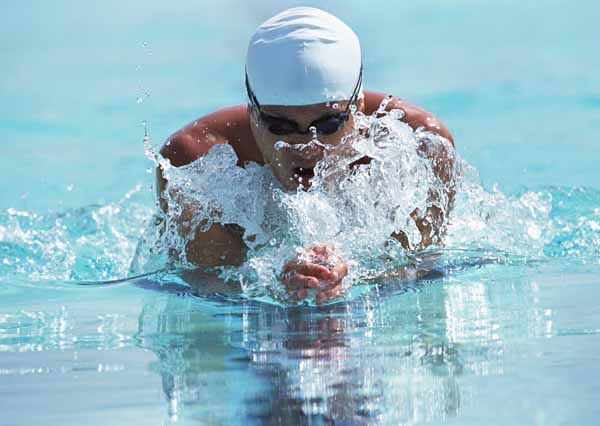
Equipment
When swimming breaststroke athlete lies on the chest, and hands and feet perform symmetrical movements in the plane. The main difference from all other styles is that in the breaststroke all the movements that the swimmer performs by hand are carried out without their removal from the water. Therefore, the breaststroke is considered to be the fastest and noiseless kind of swimming. If you prepare for scouts, then you definitely should choose a breaststroke.
In the first phase, the hands must be immersed in the water deeper, and then spread them in different directions with the palms outwards. You do not need to bend your hands, they should be parallel to the water surface. At the next phase, a stroke is performed inside, at which hands are turned with the palms facing downwards, and water is pushed back. Then the palms are joined near the chest, and the elbows are attached to the sides of the body. In the last phase of the hand again go forward, reach the original position. In the course of all actions, hands should be kept at the chest level.
As for the legs, when you rake your hands, your legs contract. In this case, the feet should be diluted much wider than the knees, and then perform a powerful push with two feet. At this time the athlete's hands are stretched forward.
Breath
In the described swimming style, the head of the athlete must completely repeat the movements performed by the spine. The second when hands fall down the trunk, a support is created to lift the head above the surface. Inhalation of oxygen is necessary for the mouth, breathe out the air with your nose and mouth during all the further movement until a new inspiration. To accelerate, you can not make constant vynyrivanie.
Errors
It's easier than a bracelet, except for a crochet. However, even here mistakes are made. First, the wrong hand operation. That they are delayed during divorce, they do not unfold their hands, but this reduces the effectiveness of swimming. Well, and legs. Legendary push with your feet is done not when you need it. Some people with a breaststroke prefer moving with their feet, as in a rabbit. Not bad, but this is not the style.
Brass is considered a popular swimming style. The technique of breastfeeding is mastered by anyone who wants to, regardless of age. In this case, the technique of swimming breaststroke for beginners is rather complicated, since coordination of movements is important. With experience they perform swimming movements, which are characterized by the technique of breaststroke swimming, it becomes easier.
This style is considered the oldest. Even in the rock carvings there is an image of a man whose swimming movements are similar to movements that use the technique of swimming in the manner of a breaststroke. In this regard, it is believed that the breaststroke style swimming technique appeared more than 10 thousand years ago. Its popularity is explained by the fact that the technique of swimming breaststroke is calm. It ensures the speed of the swimmer, but does not exhaust him. To be able to master the breaststroke, it is important to know the details peculiar to this style.
Brass: swimming, equipment
It is believed that the technique of breastfeeding appeared in France. In the exact translation, the word "brasse" means "mixing." The technique of learning breastfeeding is popular, this sport is included in the program of the Olympic Games.
The technique of swimming by means of breasts means simultaneous execution of symmetrical movements of hands and feet parallel to the surface of the reservoir in the position on the chest. The technique of learning breastfeeding included the constant retention of the head above the surface of the water. This style feature was canceled. Immersion of the head in water allowed to increase the speed, in connection with which the head in this style rises above the water only for inspiration.
|
Games |
Gold medalist |
A country |
|
Beijing 2008 |
Kosuke Kitajima |
Japan |
|
London 2012 |
Cameron van der Burg |
South Africa |
|
Rio de Janeiro 2016 |
Adam Petey |
United Kingdom |
Table of Olympic champions in the style of breaststroke
The correct technique of breastfeeding involves simultaneous and symmetrical throwing of hands forward. In this case, the legs make a synchronous push in the horizontal plane, in one cycle of movements. Brass technique is a swimming exercise, which includes: jerking, kicking, inhaling and exhaling with the mouth.
The technique of teaching the technique of swimming breaststroke is different in that hands in this style are not carried to the surface or do not rise into the air. This moment is different from other ways of swimming. Techniques like crawl or butterflies include raising hands above the water.
A podvidom original style is a breaststroke on the back of the technique of swimming which does not represent sports value. To master swimming with brace, the breathing technique is as important as the movement of the limbs.
Photo 1. When performing the technique of breaststroke swimming, hands are immersed in water simultaneously
Technique of swimming breaststroke for beginners
The technique of swimming breaststroke is not easy to master even for those who can swim with a different style. In this case, a similar method of swimming is available to people of any age.
The first classes for those who want to master the technique of swimming with a brace, begin in the pool. The lesson is taught by an instructor who will teach how to perform simple and complex exercises. The key nuance of training is the ability to balance, which is what the trainer trains.
Without special preparation to swim do not begin. Before mastering the technique of swimming breaststroke for beginners it is recommended to perform a warm-up for warming up the muscular system.
The beginning for the swim is the sliding position, in which the body is in the water in a horizontal position. The head is immersed in water, but looks in front of you.
The upper technique of breastfeeding depends on the proper movement of the hands. Beginners master the movement of the hands and the efforts performed by the feet. Efforts by hands with the technique of swimming in the manner of breaststroke, are divided into the stages:
- stroke outward;
- performance of the stroke inside (palms do not go beyond the shoulders);
- brushes and elbows;
- returning hands to the starting position.
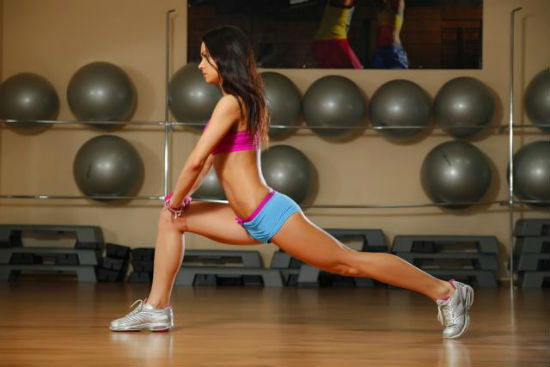
Photo 2. Warm up muscles before training in the water - an obligatory stage of training
Brushes in this case are not in the water deeper than 15 centimeters.
Beginners who want to learn the technique of breasts, to simplify the task, use a device called a colabash. It looks in the form of a "figure eight" and is intended to simplify the task. Clamped between the legs, which helps to keep the lower part of the body afloat, and work out the technique of stroking with hands.
After mastering the technique of the hands, the movement of the legs is studied. The correct technique of breaststroke swimming involves pulling the leg to yourself, for which the knees are bent, at the time of the stroke by hands. This allows you to reduce the resistance of water, due to which the swimmer repels his hands from the water. The feet are bred wider than the knees, after which the jerk (hands at this moment are in the third stage of the movement). The athlete is stretched for subsequent slip in the water by inertia, after which the movements are repeated.
Correct position of the hull is an important component of the development of an ideal balance. Brass technique of navigation implies a constant movement with respect to the vertical axis (the speed depends on this) and parallel to the water surface.
The technique of swimming breaststroke for beginners also includes the study of head movements. When swimming with this style, the head is not kept above water. When stroking your hands, your head moves forward. Allowed to tilt it, but not too much so as not to reduce the speed.
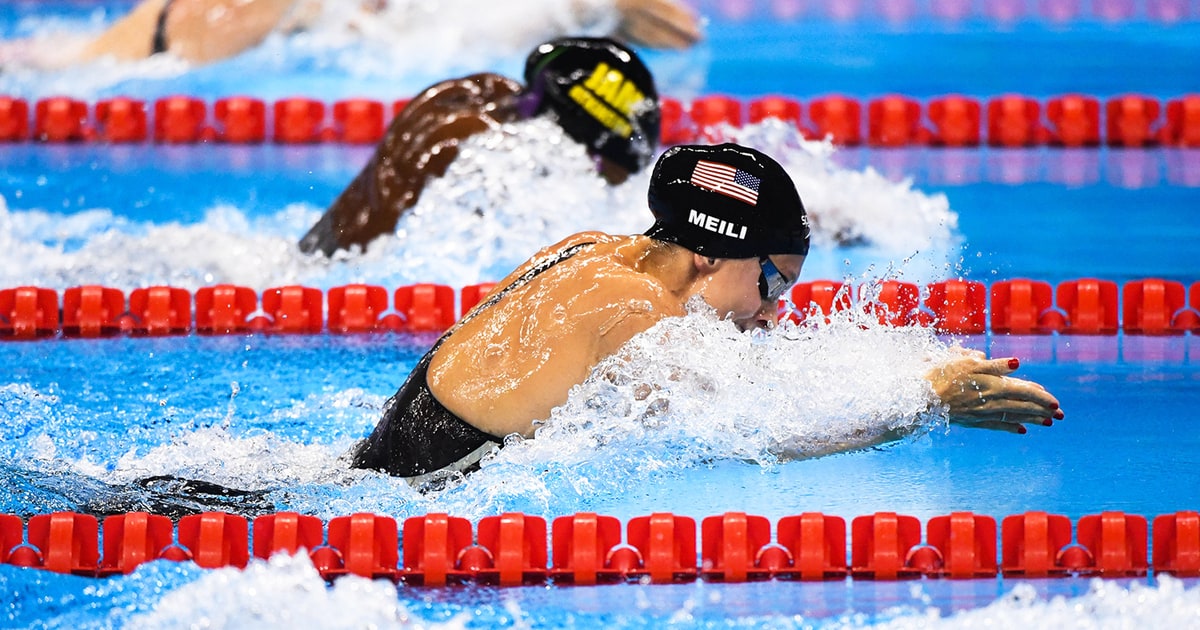
Photo 3. When immersed in water swimmers slightly tilt the head downwards
In the correct technique of swimming breaststroke attention is paid to even immersion in water, allows you to set the right pace for the subsequent movement.
To perform the jump, the legs are kept bent a short distance apart. The hands fall down, then the legs push off from the surface. With this, the hands are raised in front of you so that when you immerse in water, the brushes and the body are on the same axis.
At the lessons in the pool, they learn the technique of turning. It is based on sliding on the water after pushing away from the wall. Take a deep breath. At the turn, the starting speed is maintained.
Techniques for learning breastfeeding
The technique of teaching breastfeeding is carried out in strict sequence. In particular, the features of navigation are studied:
- body position;
- respiratory movements;
- hand movements;
- foot traffic;
- general coordination of efforts;
- other style details.
Element swimming is mastered with a gradual complication, the final result of which is the execution of exercises in a horizontal position without support.
The movements are studied on land. The acquaintance is conducted in general terms, without paying attention to the details, since the execution of movements in water and on land is different.
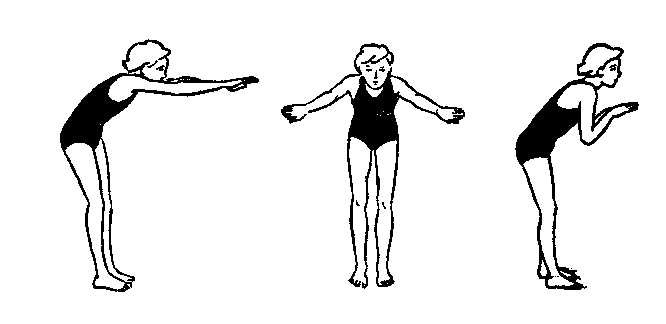
Photo 4. It is advisable to practice the movements of the hands on the technique of swimming breaststroke on land
After this, the movements are mastered in water with the support of a stationary object. As a support, use the edge of the pool or its bottom. Hand movements are studied in an upright position, standing in the water on the shoulders or chest.
The beginner swimmer goes on to study the movements in the water with the support. For this, swimming boards are used, which help to master the peculiarities of movement by hands in the supine position without stress on the lower part of the body.
After mastering the movements of hands in the water with a support, they are repeated and fixed in swimming or sliding without support. Added movements of legs and body. Beginner sportsman moves to skills training.
To improve the techniques of navigation, methods are used to alternately overcome long and short distances or float the distance with the smallest number of strokes. This allows you to make efforts sharp and strong, which in the future helps to save energy when overcoming distances.
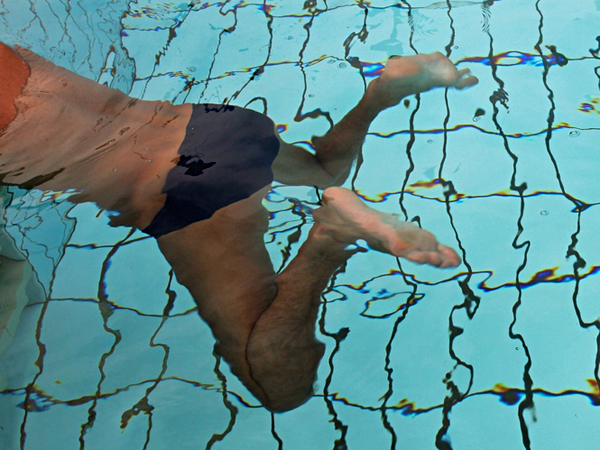
Photo 5. If you are uncertainly feelingyourselfin the pool, use the edge as a handhold
Brass on the back: swimming technique
Breaststroke on the back - A common style of swimming. It is not included in sports swimming, as a breaststroke, however it is characterized by high applied value. When swimming in the supine position on the back, help the injured person. Also it is effective at overcoming long distances.
When studying the style of the breaststroke on the back, the technique of swimming in this way is easier to master for those who are able to swim a breaststroke on the chest. As in the original style, the brace on the back focuses on the general position of the hull and movements with hands and feet.
In the initial position when swimming breaststroke on the back of the swimmer lies horizontally with respect to the surface of the reservoir. Legs stretch and connect together. Hands by the head for the width of the shoulders, unfolding the palms outward. Water covers the face, and the chin is brought closer to the chest.
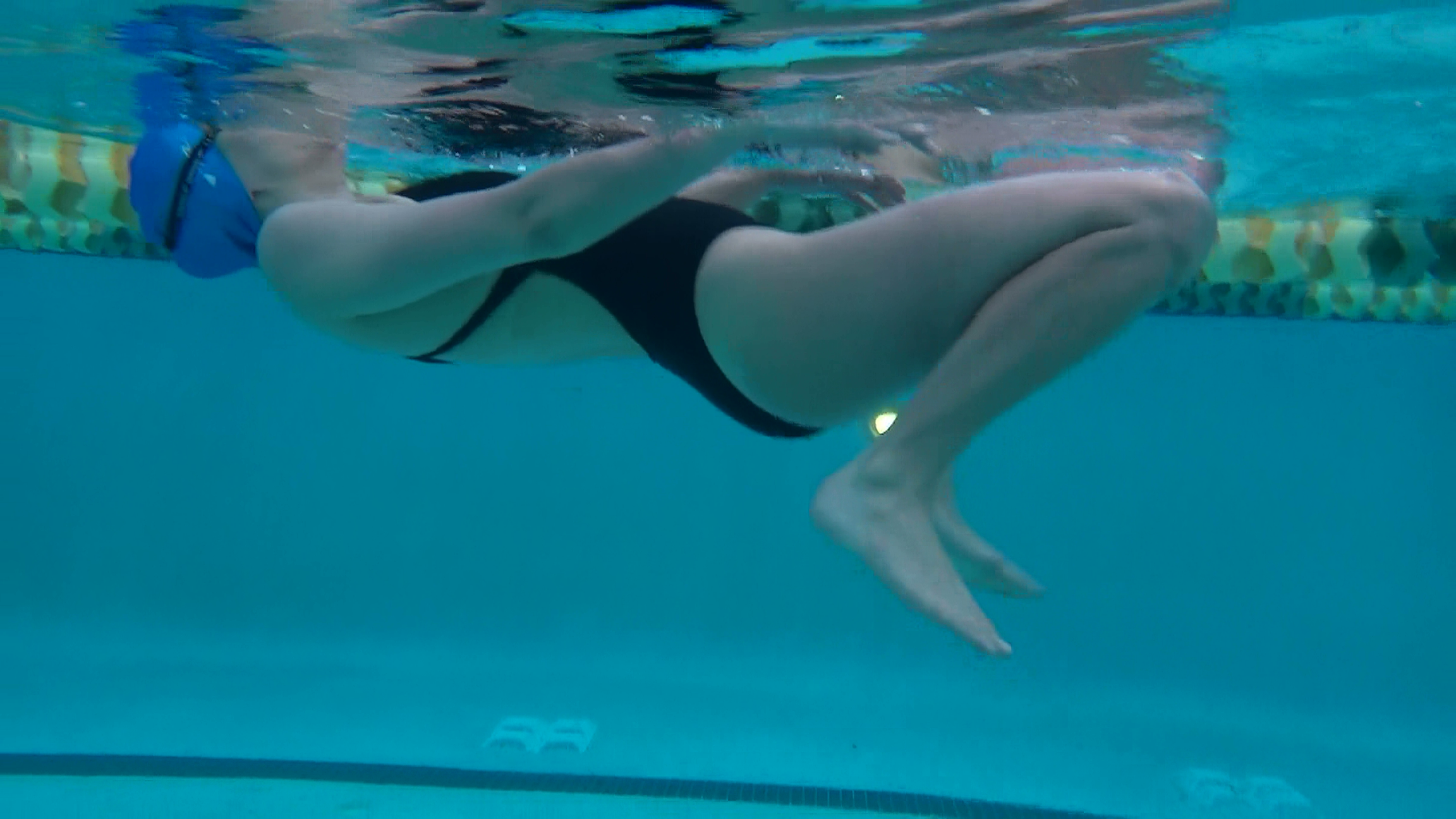
Photo 6. The brass lying on his back is carried out with legs pressed under him
Hand strokes produce synchronously. From the initial position, the movement is performed with acceleration to the sides and downwards. Brushes unbend gradually, without losing support for water. Ends with a stroke of hands at the level of the hips by straightening the upper limbs. This is followed by a sharp rise of hands, after which they sweep through the air and return to initial position. When moving through the air, the hands turn their palms outward and lower them into the water at the width of their shoulders. Perform this movement quickly and with minimal muscle tension.
With the efforts of the hands, the legs bent at the knees and hip joints are spread with heels to the sides at the width of the shoulders. After this stop, the swimmer lowers and bringing his heels closer to the pelvis, spreads his shoulders wider. The feet are turned and sideways and "on themselves," and the shins are turned outward and also spread apart. The impetus from the water is performed by the inner surface of the thighs, feet and shins. At the same time, the legs are unbent and brought together.
Respiratory movements in this style are coordinated with the efforts of the hands. Inhale is produced at the end of the stroke by hands and at the beginning of their movement over the water, and exhalation - at the stroke.
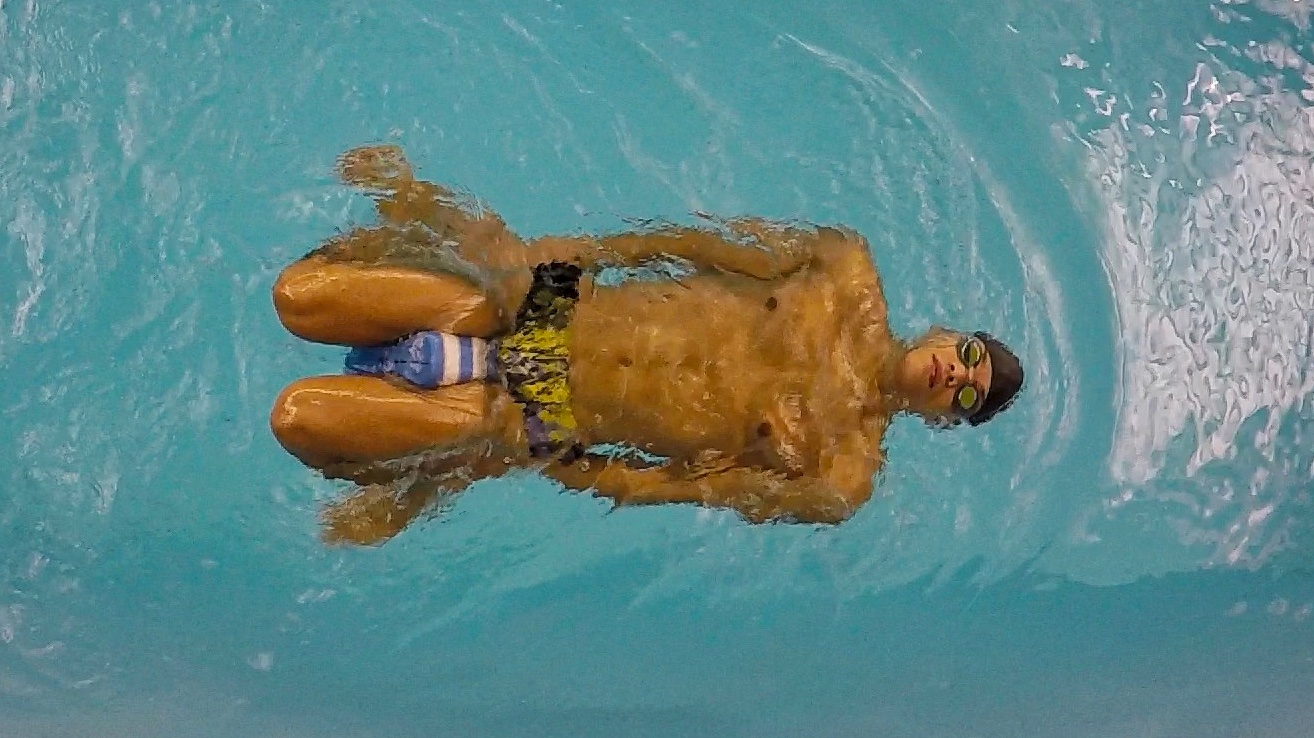
Photo 7. The technique of moving your legs while swimming with a breaststroke on your back can be improved with the help of a columbine
Breastfeeding: breathing technique
When swimming with breaststroke, the breathing technique is no less important than the technique of movement. From this feature of the style of swimming depends on the speed of movement. If you use your nose and your breath for breathing, it will be difficult to swim for long distances.
In connection with this, respiratory movements are performed solely by mouth when swimming with brass. The breathing technique involves inhaling, which is performed at the final stage of the stroke, because at this time the mouth is at a point above the surface of the water. If you inhale sooner or later, water will enter the lungs. Breathing should be uniform. Exhalation is done until the moment when they again take a breath - at the final stage, stroke by hand.
Beginners learn the breaststroke, swimming style, breathing technique is difficult because of unaccustomed breathing. To facilitate this task, it is recommended to exhale until the head rises, then take a sharp breath.
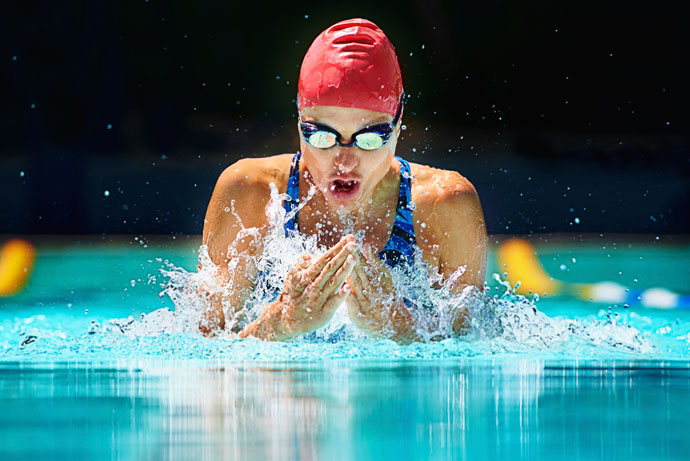
Photo 8. A deep and quick breath before immersion is an important element of correct breathing when swimming with a breaststroke
Advantages of breaststroke technique
The main advantage of the technique of learning the technique of swimming is that any person can master it regardless of his age or state of health. For this, it is not necessary to have special training or to be able to swim.
Like the other kind of swimming, the breaststroke, the technique of swimming exercises which quickly master, helps to strengthen the muscular corset of the body. Positive impact on the muscles of the hands, back, legs and the press, the cardiovascular system. Due to swimming improves blood circulation and strengthens blood vessels, increases the endurance of the heart muscle. The benefits extend to the respiratory system. Due to the special breathing technique, the lungs work at full power, which leads to an increase in their volume.

A photo 9. Sports swimming tightens the body, making it strong and slender
Swimming style brass has a positive effect on the spine. It helps to get rid of some of its diseases (depends on the stage of the disease) and form a correct posture.
Due to long-term interaction with low temperatures and active movements, swimming with this style allows you to keep yourself in shape. For half an hour of such a load, 270 kcal are spent and make your movements graceful.
Particularly useful for swimming is the style of a breastplate for women who are in a pregnant state. Regular swimming allows you to minimize the burden on the spine, which is increased due to the bearing of the child, strengthening the internal muscles. In the future, this will facilitate the process of delivery. In addition, swimming good way to relieve stress and reduce anxiety.
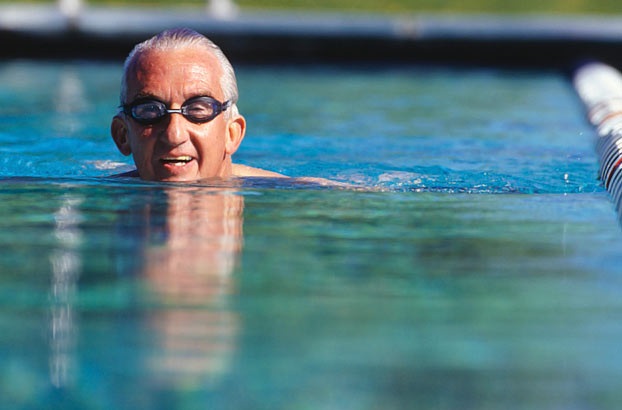
Photo 10. The style of the breaststroke is suitable for people of any age, especially it is useful for the cardiovascular system
The correct technique of breaststroke swimming
In order to master the correct technique of swimming by the way of breaststroke, it is important to remember that it consists of stages that involve the alternate use of hands, body, legs and head:
- To start, they lay down on the water, stretching their arms in front of them and lowering their hands down. Legs are brought together and kept straight. The head is in the water approximately at the level of the eyebrows.
- The palms turn around the back of each other, after which the arms are divorced to the sides and fall down, making a rowing under water. The head is above the surface of the reservoir, which allows breathing in.
- Hands make a stroke, without leaving the shoulder line. Near the end of the movement, the upper limbs bend at the elbows and fall under the water with the forearm, after which the palms are brought under the chin and lowered by 5 cm. The head at this time descends into the water, after which it is exhaled.
- When accelerating the movement of the hands, connect the legs, bending them in the hip and knee joints. When the legs are diluted, they are at the same level with the shoulders. Steps are diverted to the side, a push is made, after which the socks are bent "on themselves." In this movement, the swimmer repels from the water, accelerating.
- After that, the legs and hands return to their original position.
Inexperienced swimmers try to keep their heads above the water constantly, without lowering it. It is difficult, uncomfortable and dangerous for the spine. Excessive tension of the muscles of the neck and back provokes displacement in the joints of the spine.
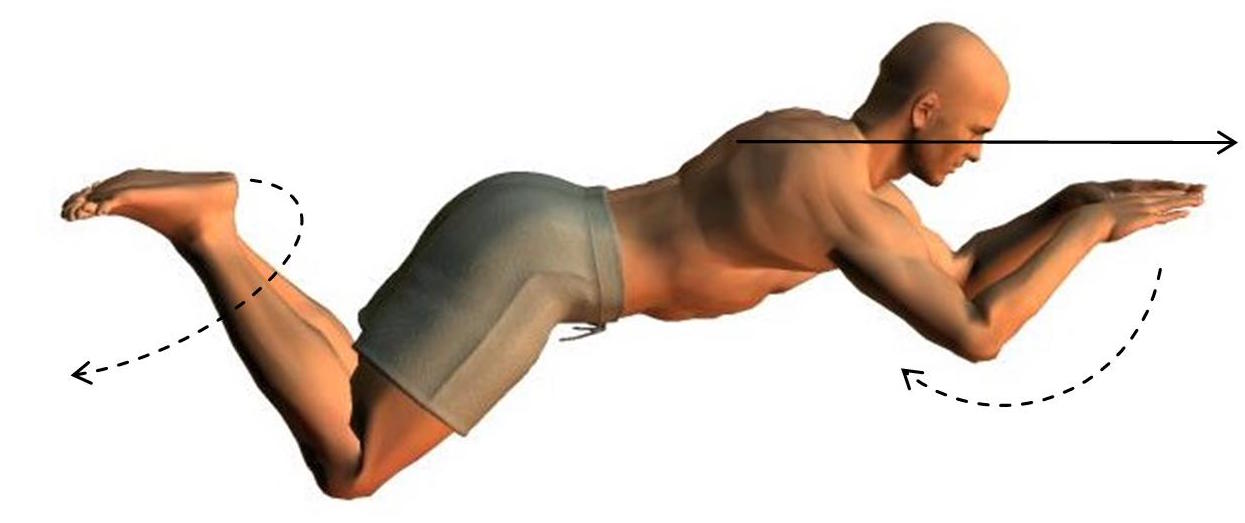
Photo 11. While swimming breaststroke is a semicirclehands, legs are reduced and divorced
It is important to remember that with a breaststroke style of swimming technique, the upper limbs return to their original position before the legs. Movements begin at a leisurely pace, gradually increasing. Watch the synchronism of the movements of the hands or feet.
Common mistakes when using the technique breasts
A common mistake among beginners is an attempt to keep the head above the surface of the reservoir constantly. This makes the swimming process a laborious task, creating the danger of injury. A similar error leads to damage to the cervical region due to constant tension. The following errors are encountered:
- Excessive strokes by the shoulders - a similar technical violation is gross. It provokes a situation in which the hands are at a great distance behind their back, which is why the style loses its lightness.
- Pause in the middle of the cycle of movements - a similar error is associated with the displacement of the center of gravity at the end of the stroke by hands. Beginner swimmers pause while holding hands at chest level, although there should be no stopping. Hands are thrown with acceleration forward with top housing.
- Changing the movement of the body with the movement of the head. - The technique of breastfeeding does not involve the movement of the neck (they are minimal). Such an effort causes the body to oscillate, which leads to a decrease in speed and an increase in water resistance.
- Late breath - inhale the air until the moment when the hands come together under the breast. Otherwise, the water will enter the lungs.
- A weak push with your feet - a good kick of the legs can reduce the load on your hands and increase your speed. To do this, do not swing your legs and do not make a wide impact. With the right technique, water is pushed back, which leads to a forward movement.

Photo 12. Paddling with arms under the water with tightened shoulders - a pledge of the correct performance of the brass technique
Another mistake is holding the elbow in a high position, the cause of which is the lack of a proper grip.
Exercises for training
To fasten the technique of swimming with a breaststroke, perform preparatory exercises on land and in water. This will make it possible to understand technical issues and master them through the use of muscle memory. Examples of some exercises:
- do sliding movements on the surface of the water, being in a position lying on the chest with arms outstretched forward; at the moment of raising the head for air, they hold their breath. Advancement occurs with the help of the feet, makes joggling movements;
- dive under the water, holding your breath, then jump abruptly out of the water, breathing in and out with a further dive; do 10 times without pauses between exercises;
- to make dives, having made a long exhalation under water; such an exercise is repeated at least 10 times.
To practice in the pool to benefit and give a quick result, observe some rules. Make a warm-up for warming up the muscles. When swimming, you should not make stops or be distracted by extraneous matters.
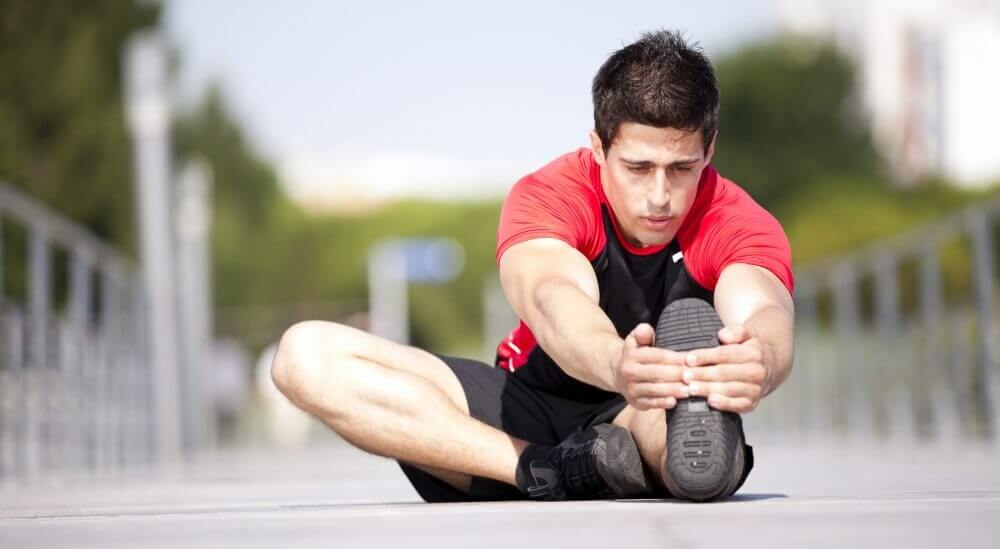
Photo 13. The warm-up of the sportsman before swimming prepares the body for the upcoming loads
They train for at least 40 minutes and not more than 1.5 hours. Duration is increased gradually. Frequency of training - at least 3 times a week.
At each lesson, they increase their workload as their stamina increases. For the development of coordination, change the speed of navigation and, if possible, alternate styles.
To avoid feeling unwell in the class, do not eat before and after. The time interval between the last meal and going to the pool is at least 1 hour.
Video: Exercises for working out techniques of swimming breaststroke
In the rock paintings you can often see a person who carries out swimming movements with his hands. At the same time they resemble movements from the style of swimming breaststroke. This style of swimming appeared more than ten thousand years ago. Today, it is one of the most popular swimming styles, which is mastered by both children and adults. This style of swimming is included in the program of the Summer Olympic Games and enables many athletes to climb the Olympic pedestal.
The concept of
Brass (from french brass - "hand") is one of the oldest styles of swimming, which is simultaneously complicated in the technique of execution, fast and easy to overcome long distances.
Breaststroke - a style of swimming on the chest, in which the swimmer performs simultaneous and symmetrical movements of the hands, as well as simultaneous and symmetrical movements of the feet in the horizontal plane below the surface of the water.
Everyone can swim with a breaststroke, regardless of age. Swimming always brings a lot of benefit to the body, regardless of the style used.
Technique swimming breaststroke
To master the technique of swimming breaststroke alone is quite difficult even for those who swim with a different style. To learn how to perform, at first glance, simple movements, it is worth spending your first lessons with the coach.
The technique of breaststroke swimming consists of several stages, each of which involves the hands, feet and head alternately, during the movement of which the breaths are exhaled.
To make a breaststroke, you need to lie down on the water, hands to pull out in front of you, lowering your hands down, and keeping your legs straight and together. The head should be in the water at the level of the eyebrows.
At the first stage actively working hands. The palms turn to each other in the back. From how correctly the palms and the forearm will be located depends on the regulation of the stroke and the correct direction during the voyage. Now the hands are slightly divorced to the sides and a little lowered, making a rowing with water. In this case, the head rises above the water level, so that you can inhale.
In the second stage hands continue to make strokes. In this case, they should not go beyond the shoulder line. By the end of the stroke, the arms are slightly bent at the elbows and lowered under the water together with the forearm. Palms curl under the chin and drop to 5cm. At this point, the head falls under the water and exhaled.
The third stage It starts when the hands speed up the movement and connect the legs. Legs begin to bend in the knees and hip joints. When you divorce your knees should be at shoulder level. The steps are taken a little to the side, and to implement the push they are bent with socks on themselves. It turns out that the feet are supposedly repelled from the water and accelerate the swimmer's movements. After repulsion, the legs return to their original positions, i. E. become straight.
This slide on the water lasts until the speed begins to fall. When the speed of the traffic falls, they start to repeat.
For a more understandable perception of the technique of breastfeeding, see the photos.
photo № 1. Swimming breaststroke (view of swimmer in front)
photo № 2. Swimming with breaststroke (view of swimmer from side)
photo № 3. Swimming breaststroke (the kind of swimmer from above)
Technique of breaststroke swimming - video
See the video for details on how to make starts and turns when swimming.
- Hands return to their original position earlier than their legs.
- Movements start at a slow pace first, and then gradually accelerate.
- Movements with hands and feet are performed synchronously. Otherwise, it will not work.
- You can not always keep your head above water, because it's dangerous for the spine and not convenient for the swimmer.
Breathable breathing
Breathing is carried out at a time when the hands go under the water, and the head overcomes the water feature. Breathing is carried out by the mouth. Exhalation makes the mouth and nose throughout the following movements and can continue until you need another air supply. There is no need to inhale every time the head emerges from under the water, but it is necessary to cross the water line with each hand going under the water.
Errors while breastfeeding
The main mistake in swimming is poking the toes of the feet with water. To eliminate this error, a special exercise is developed - see the video.
Outfit while swimming breaststroke
The swimmer's equipment is the same as for any other form of sailing. To it carry: glasses for eyes, a hat, swimming trunks or a bathing suit for women. Sometimes a wetsuit is used. A wetsuit should only be made of cloth. For a woman, he must completely cover the body, from the neck to the knees and be without a zipper on the back, and for men is presented in the form of shorts to the knees and T-shirts. More about types of wetsuits for swimming can be read in the article by reference.
Records for swimming breaststroke
Brass is one of the sports that is represented at the Summer Olympics. In addition, the World Championships, World Cups, Universiades, European Championships and national championships are held. Competitions on swimming breaststroke are held among young men, juniors and athletes over 25 years old. The distance of the distances to which the swim takes place becomes 50, 100 and 200 meters.
Many athletes have reached significant heights, participating in competitions in swimming in the swim with a breaststroke. Among them there are sportsmen-celebrities: Galina Prozumenshchikova (USSR), Lina Kachyushite (USSR), Agnesh Kovacs (Hungary), Frederik Holman (Great Britain), Kosuke Kitajima (Japan), Julia Efimova (Russia).
World records for swimming breaststroke a little.
World records for swimming breaststroke in a 50 meter pool.
Among men on the swim of 50 m and 100 m at the World Championships in 2015, the world record was set by the Englishman Adam Piti. Distance of 50 m. He swam for 26.42 seconds, and 100-meter overcame in 57.92 seconds. The record at a distance of 200 meters is 2 minutes 07.01 seconds. It was installed by Japanese citizen Akihiro Yamaguchi in 2012.
Among women the record holders were Lithuanian Ruta Meilutita and Danish Rikke Pedersen (2013 World Championships). Ruta Meilutite owns records at 50-meter distance (29.48 seconds) and 100-meter distance (1 minute 04.35 minutes)
Rikke Pedersen set a record at a distance of 200 meters Record time was 2 minutes 19.11 seconds.
World records for swimming breaststroke in a 25 meter pool.
Among men at distances
- 50 meters - the record was set by Cameron van der Burg (South Africa), time - 25.25 seconds.
- 100 m breaststroke - also a record belongs to Cameron van der Burg, time - 55.61 seconds.
- 200 meters - record holder Daniel Dyurta (Hungary), time - 2 minutes 00.48 seconds.
Among women:
- 50 m - the record was set by Jessica Hardy (USA), time 28.80 seconds (World Cup in 2009).
- 100 meters - a record set Ruta Meilutit (World Cup 2013) and Aliya Atkinson (World Cup 2014). Their time is 1 minute 02.36 seconds.
- 200 meters breaststroke - record holder Rebecca Soni (USA). Its time is 2 minutes 14.57 seconds. The record was set in 2009 at the "Duel in the pool" competition in the UK.













